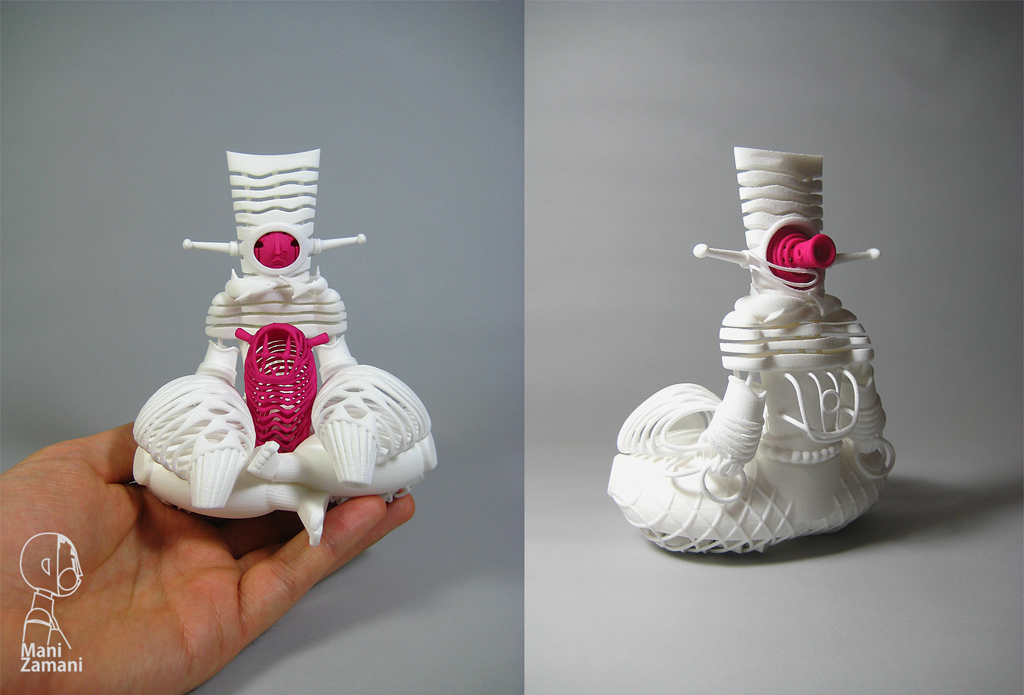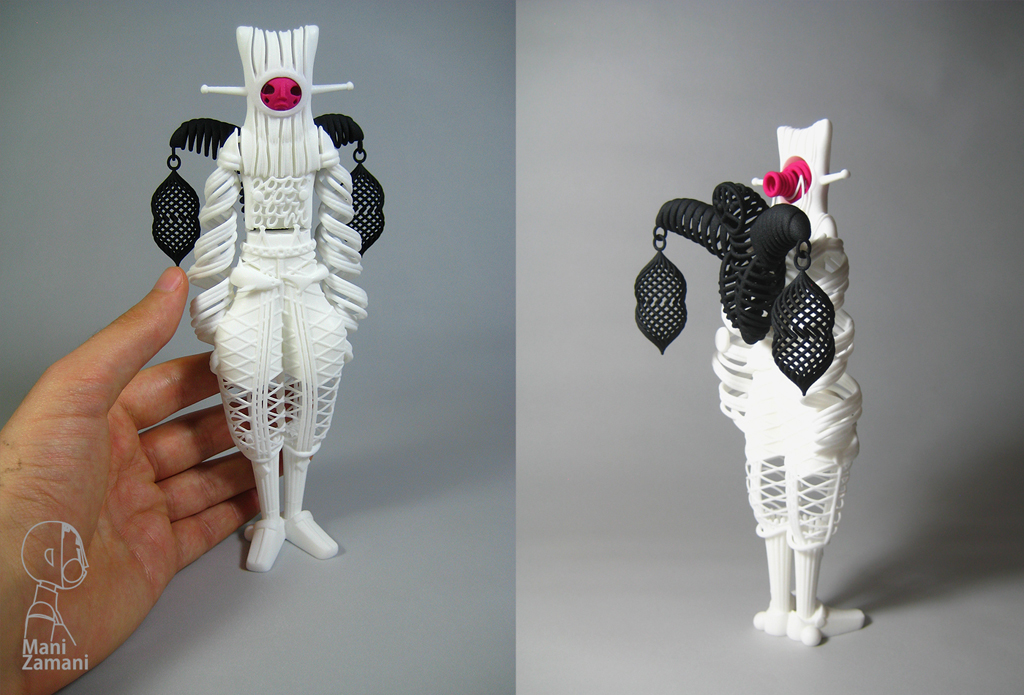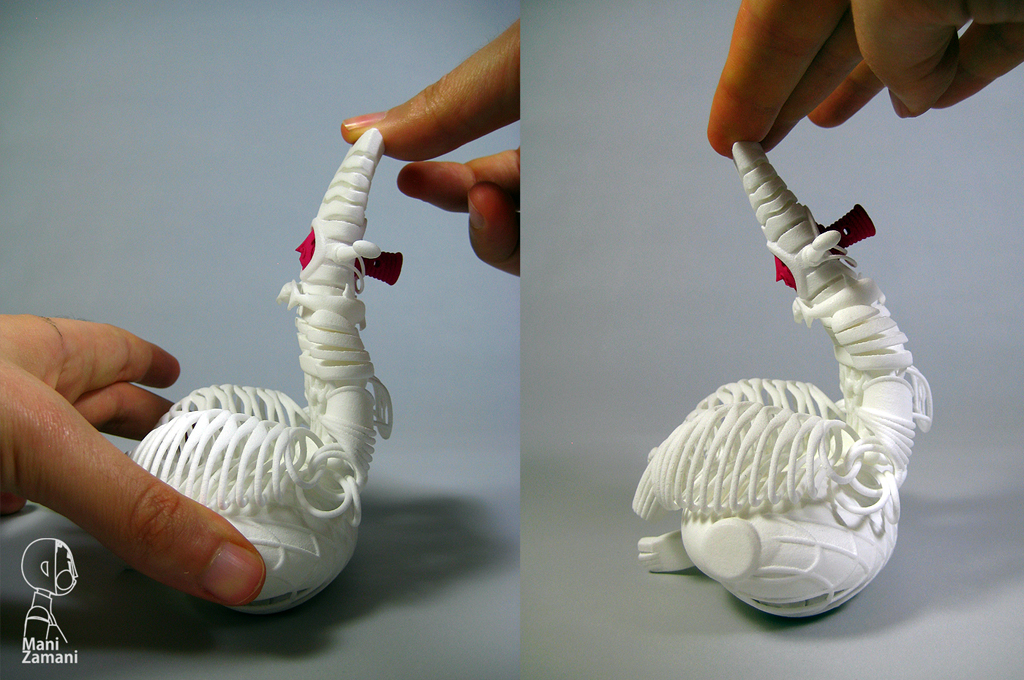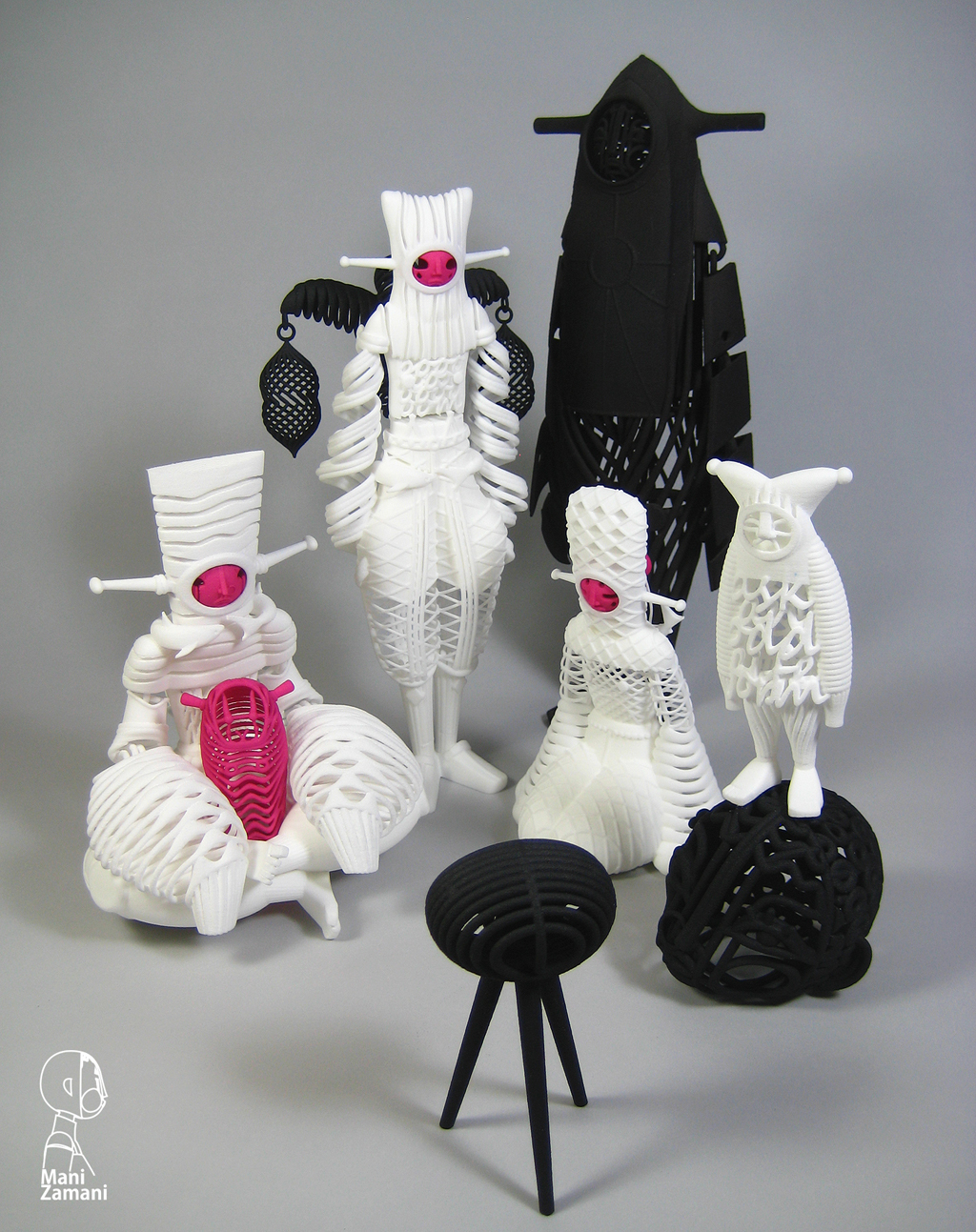In the 3D printing world, we produce a lot of tchotchkes, knick-knacks, and doodads. What is a 3D printed Yoda head? Is it a toy or a work of art? Or does it fall in the thingamajiggy category? Does a work of art become ‘less than art’ when it is reproduced and printed using a different material? Does an art object become a toy through the process of miniaturization and reproduction? Andy Warhol once asked “isn’t life just a series of images that change as they repeat themselves?” If that is what life is, then how is art any different? At the advent of the 3D printing and scanning technology boom, these are the kinds of questions and ideas our community are exploring. Every once in while, a digital modeling and fabrication artist releases a “toy” line like Mani Zamani’s ‘Extra terestri aristocrats’ that gives us pause and challenges us to observe a new thin line between high art and 3D modeled toys.
Zamani, who is based in Gothenburg, Sweden, says that the story behind his latest art-toy creation was conceived as a hybrid of “clothing and alien skin interwoven within each other, depicting a certain aristocracy dominating the galaxy.” That’s cool, but explain that to the kid who’s buying them. But are kids buying these? With limited flexibility, few moving parts, and a $4-$160 price tag, these aren’t exactly your go-to action figures. In actuality, they seem to be conceived more as “don’t touch” toys, which we all know kids really, really … love. Maybe, ‘Extra terestri aristocrats’ are more like adult toys… get your mind out of the gutter.
Zamani is very serious about toy design. For each of his creations, he spends about 3 months from the initial idea to the finished model, crafted in Rhino 3D, before partnering up with Shapeways to sell his designs. The numerous intricate details of Zamani’s designs lend themselves to being printed by expensive, industrial Selective Laser Sintering (SLS) machines over desktop 3D printers. Shapeways not only has all of these machines on hand for customers, but can also offer each object in a variety of colors, allowing the buyer to do a little designing themselves.
The ability to print one-off, highly original pieces of art with advanced SLS printers at a relatively low cost is one of the amazing advantages of a growing 3D printing community. Mani Zamani calls them toys, but are they? What is art in light of the ability to replicate an object in 3 and even 4 dimensions within hours? As technology evolves, it forces us to re-examine convenient words, labels, and lifestyles previously taken for granted. As our reach expands, so should our conceptual definitions.







